“I am the BBC as you can see, and here was the last news.”The Bed Sitting Room (Richard Lester, 1969)
Mar
22
National Goof-off Day

The BBC (Frank Thornton) bringing you the news (via). DP: David Watkin.
A truly silly film for National Goof-off Day (USA)
– The BBC
“In a short while you'll see that the moon won't be so bright as it is. Clouds will cover it… it'll get broken up there. I hope it won't break us.” The Moon Over the Alley (Joseph Despins, 1976)
Mar
21
End Racism Day

Ronnie Gusset (Patrick Murray), Sherry (Bill Williams), and Belinda (Sharon Forester) at a kitchen table, chatting and laughing. DP: Peter Hannan.
Diversity for the International Day for the Elimination of Racial Discrimination.
Today marks the anniversary of the Sharpeville massacre (1960), when police butchered dozens of people gathered to protest the pass law, one of Apartheid's many cruel segregation measurements.
– Sybil
The multicultural residents of a Notting Hill boarding house go about their day – listening to the radio, humming, singing – with the local council's imminent demolition of their home looming over them.
A kitchen sink drama, yes. But also a catchy musical, written by no other than Galt MacDermot, who brought the world the musical Hair (1967) and the blaxploitation neo-noir Cotton Comes to Harlem (1970).
“Stand by, there's trouble coming soon.”The Man Who Knew Too Much (Alfred Hitchcock, 1934)
Mar
21

Abbott (Peter Lorre). DP: Curt Courant.
– Bob Lawrence
Eine mysteriöse EPIDEMIE ist ausgebrochen.Grauzone [Zones] (Fredi M. Murer, 1979)
Mar
21
1976
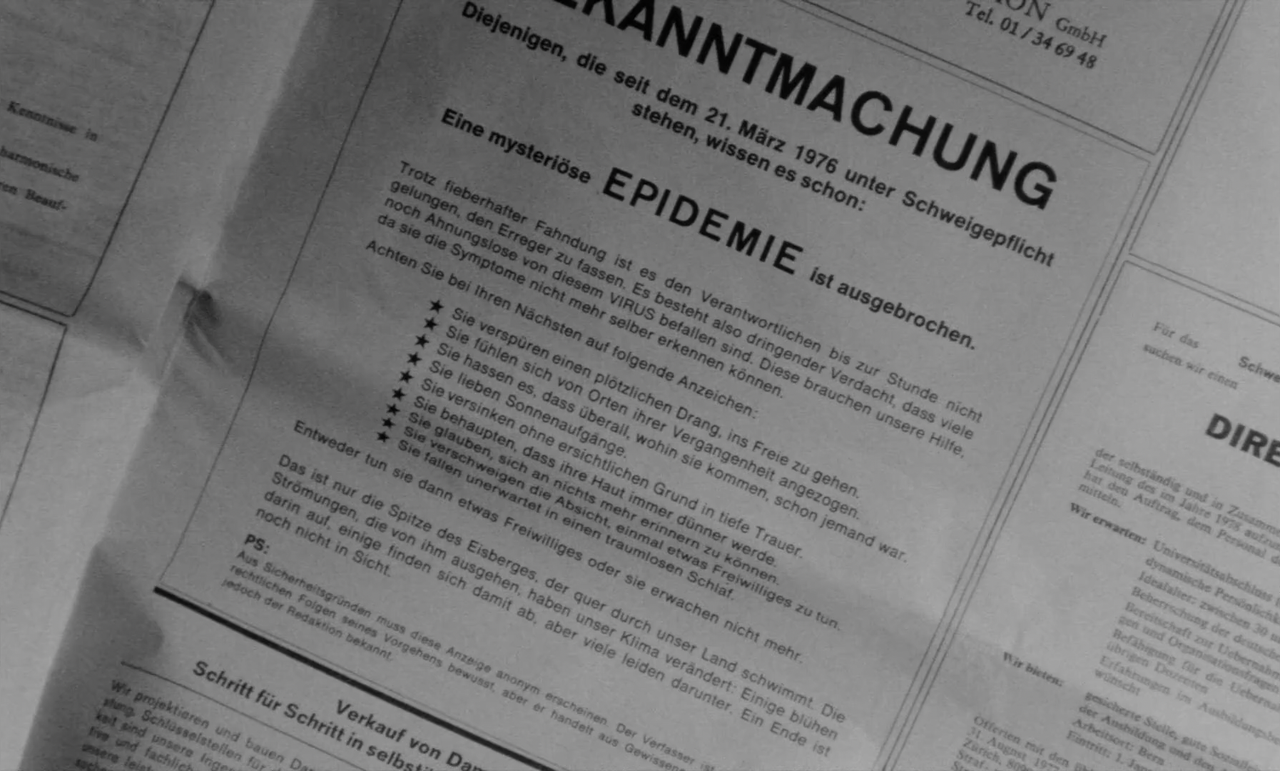
The anonymous, urgent newspaper announcement referencing the oath of secrecy considering a mysterious epidemic, starting March 21, 1976. It lists all the symptoms. DP: Hans Liechti.
“There was a silence different from all other silences, an ashen light, and then darkness – total stillness. I thought that during an eclipse even our feelings stop. Out of this came part of the idea for L'eclisse.”L'eclisse [The Eclipse] (Michelangelo Antonioni, 1962)
Mar
20
natural phenomena

Vitti's blond hair shifts in front of Delon's dark coupe, quietly mimicking the eclipse. DP: Gianni Di Venanzo.
A natural phenomenon for this year's March equinox, three supermoons, and the March 25 solar eclipse.
– Michelangelo Antonioni talking about experiencing a solar eclipse, possibly the total eclipse of 1961 which showed up in the film Barabbas (1961).
During several moments in the film, the main characters' mannerisms foreshadow the looming solar eclipse.
“One must confront vague ideas with clear images” La Chinoise, ou plutôt à la Chinoise: un film en train de se faire [La chinoise] (Jean-Luc Godard, 1967)
Mar
19
Howard University Protest

Yvonne (Juliet Berto) holed up behind piles of Mao's Little Red Book, wielding a machine gun. DP: Raoul Coutard.
Student activism to commemorate the March 19 1968 Howard University Protest
– slogan on a wall
Five Maoist students theorise, then practice a radical overthrow via terrorism.
Loosely based on Dostoyevsky's Бѣсы [The Possessed] (1871–72).
Un soir, un train [One Night, a Train] (André Delvaux, 1968)
Mar
18
André Delvaux
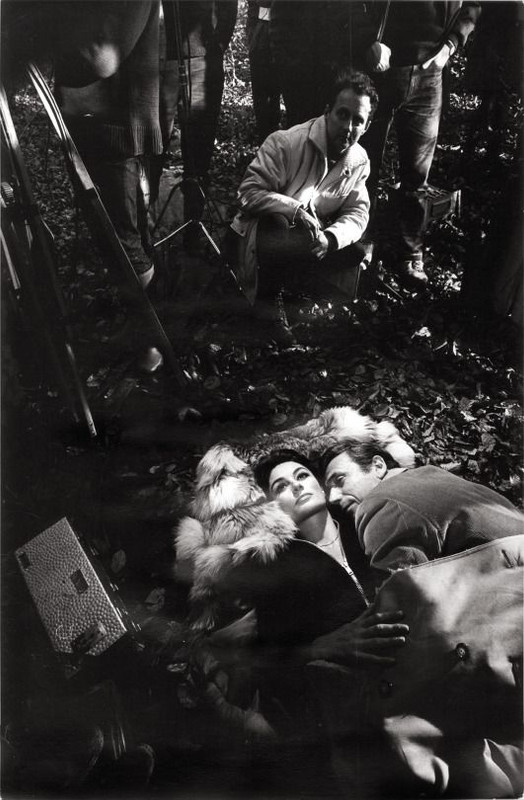
Anouk Aimée and Yves Montand in character on a leaf-strewn floor, his head resting on her chest, with director André Delvaux and others surrounding them. DP: Ghislain Cloquet.
A favourite film, director, or producer for Luc Besson's birthday (1959).
Having only seen three of Delvaux's films, I feel I can safely say his work is hypnotic, but not in the common sense. We see a world through both Delvaux's and his protagonists eyes, and experience their duality as one. This displacement is a recurring theme in Delvaux's work, the work of a man raised in one world and speaking the language of another, both worlds bearing the same name, Belgium.
This slow tear is also the theme is his best known film, De man die zijn haar kort liet knippen [The Man Who Had His Hair Cut Short] (1965), in which a schoolteacher loses himself after a pupil graduates. When we think we are firmly seated in Delvaux's universe, we fall back, like that moment just before sleep sets in. And again, in his tragically under-seen Belle from 1973. Now it's a poet who finds a woman living in a ramshackle hut in Belgium's peatland, her language an unknown. With only one main speaker, the duality forms in the poet's words, in his attempts to give her root.
And so do we, the viewers. We hang on to that root, Delvaux's, only to sink back into our own loss of words.
“He remembers those vanished years. As though looking through a dusty window pane, the past is something he could see, but not touch. And everything he sees is blurred and indistinct.”花樣年華 [Fa yeung nin wah / In the Mood for Love] (Wong Kar-Wai, 2000)
Mar
17
Irish-American Heritage Month
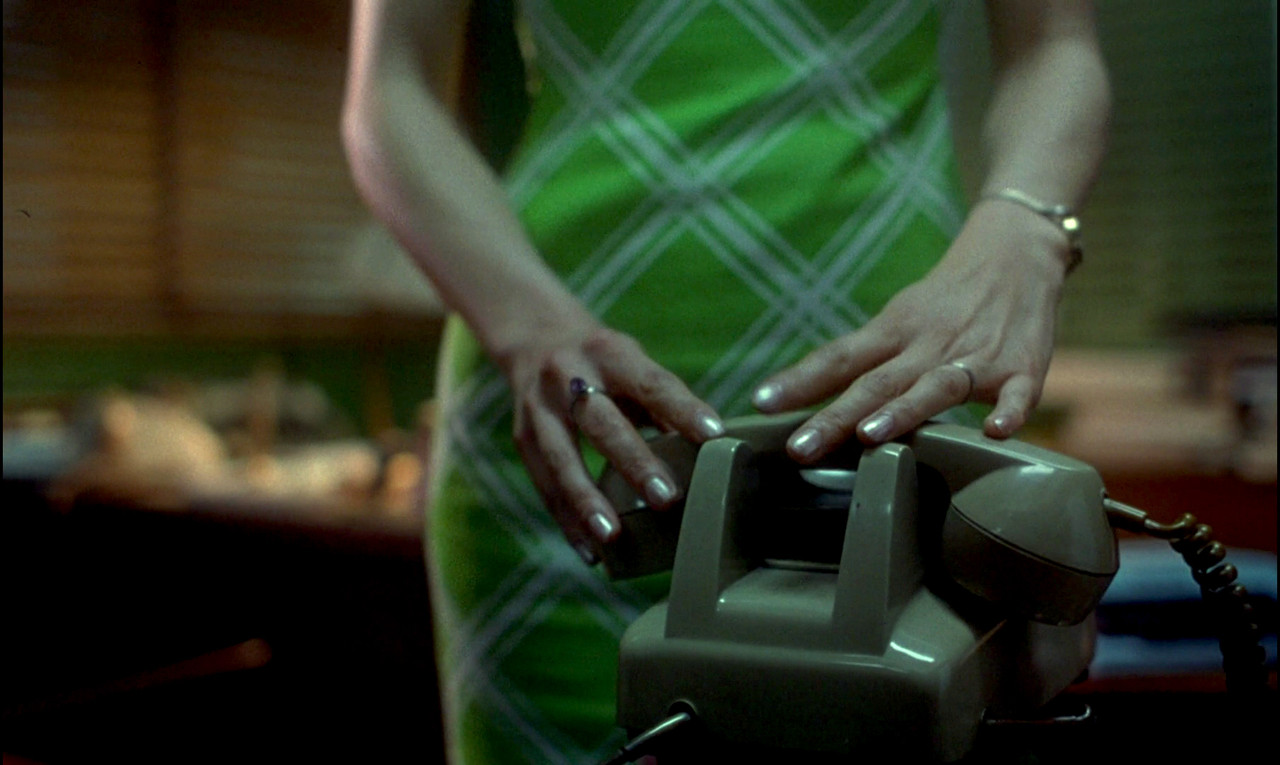
A close-up of a pea-green phone with Mrs. Chan's (Maggie Cheung) hands resting on the receiver. Her dress is a bright green, with an abstract graphic in white. DPs: Christopher Doyle, Pun Leung Kwan & Ping Bin Lee.
Green for Irish-American Heritage Month (USA)
– caption
“Our past doesn't belong to us.”La Chambre verte [The Green Room / The Vanishing Fiancée] (François Truffaut, 1978)
Mar
17
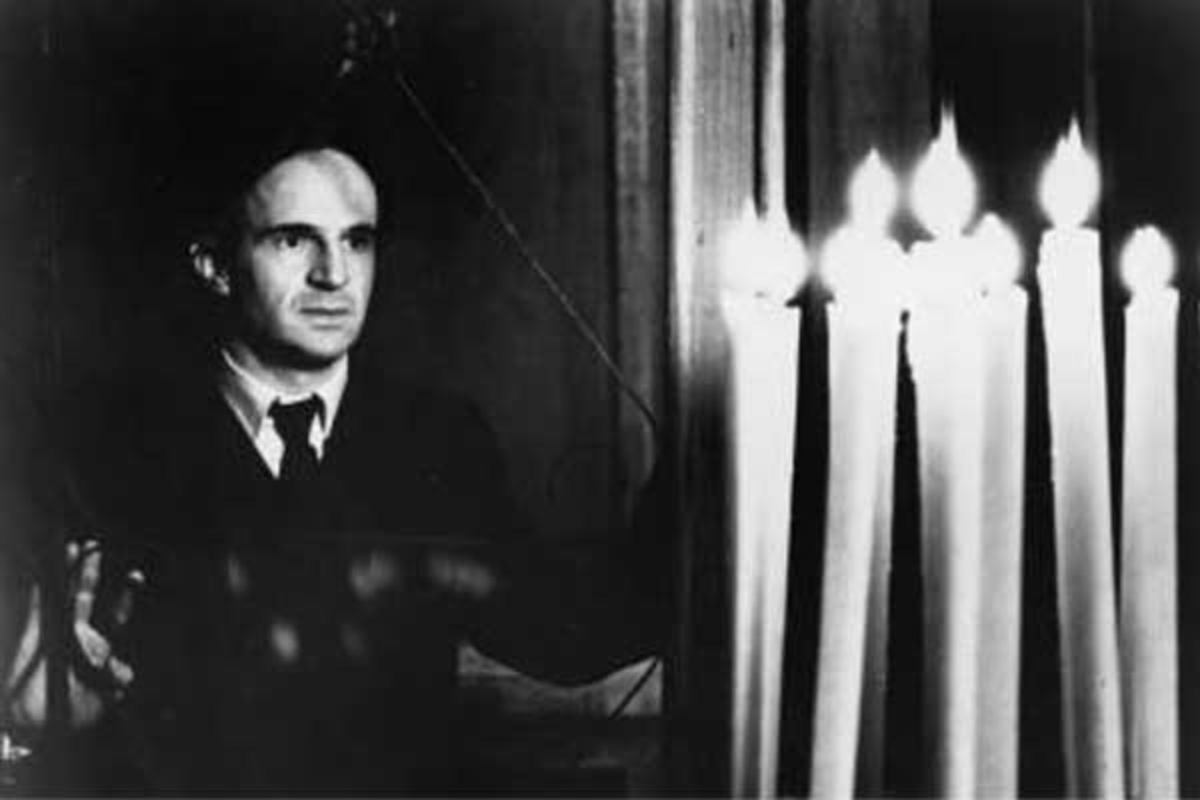
Julien Davenne (Truffaut). DP: Néstor Almendros.
“For me it’s important to note that the film’s information is also the only thing you know. That’s the idea of the tip of the iceberg, provided that only the portion above the water exists (in the film), because you know nothing of what’s under water and therefore it’s impossible for you to describe the entire iceberg.
For example, in De nieuwe ijstijd the characters are not described 'in their entirety'. What is shown is only what we’ve encountered when we were filming. It’s always a limited, fragmentary knowledge of everything that exists, and that’s how it’s shown.”De nieuwe ijstijd [The New Ice Age] (Johan van der Keuken, 1974)
Mar
16
Reykjavík Food & Fun Festival
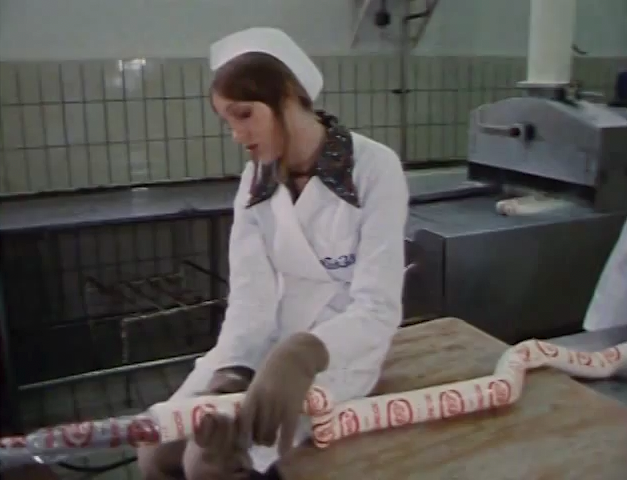
A young female factory worker listlessly fills a long plastic tube with pale ice-cream.. DP: Johan van der Keuken.
Ice or cold food to celebrate the final day of the Reykjavík Food & Fun Festival
– Johan van der Keuken, via
Part three of Van der Keuken's Noord-Zuid trilogy. Again we are confronted with the contrast between the First and Third world, here represented by a Dutch family of monotonous ice-cream factory hands, and impoverished Peruvian workers establishing self-governance, accompanied by Willem Breuker's punching free jazz cacophony.